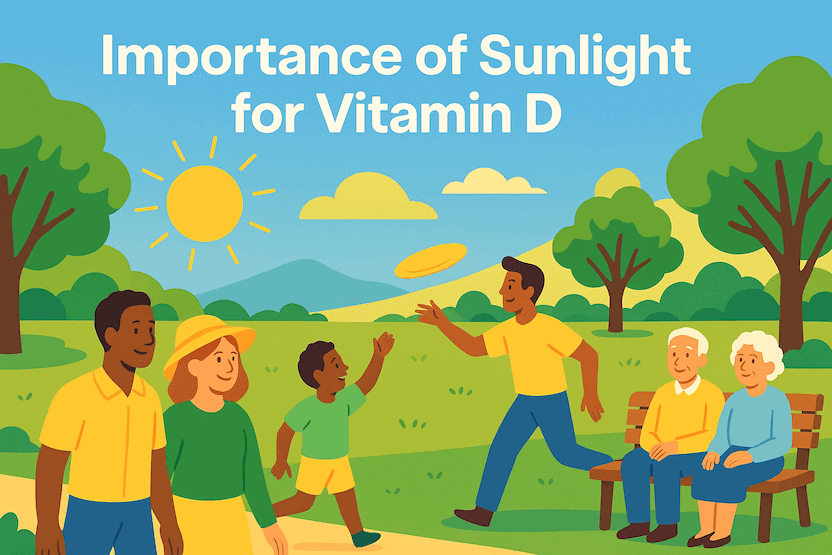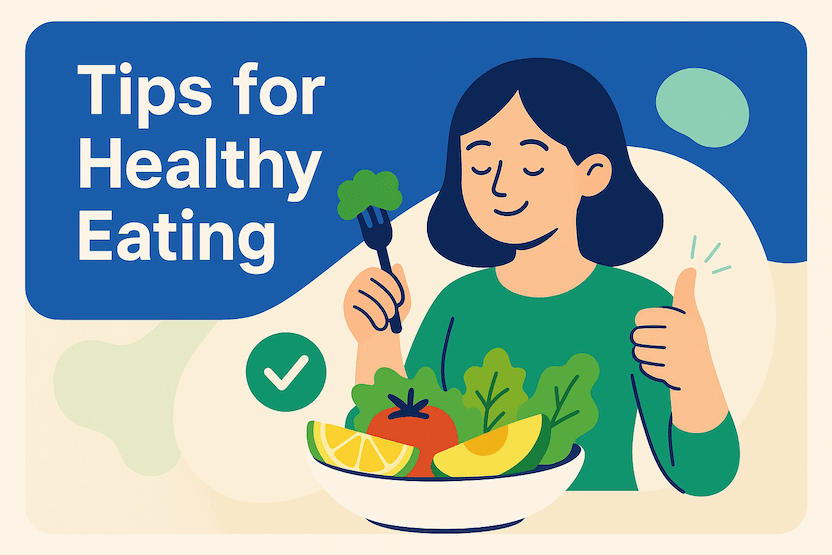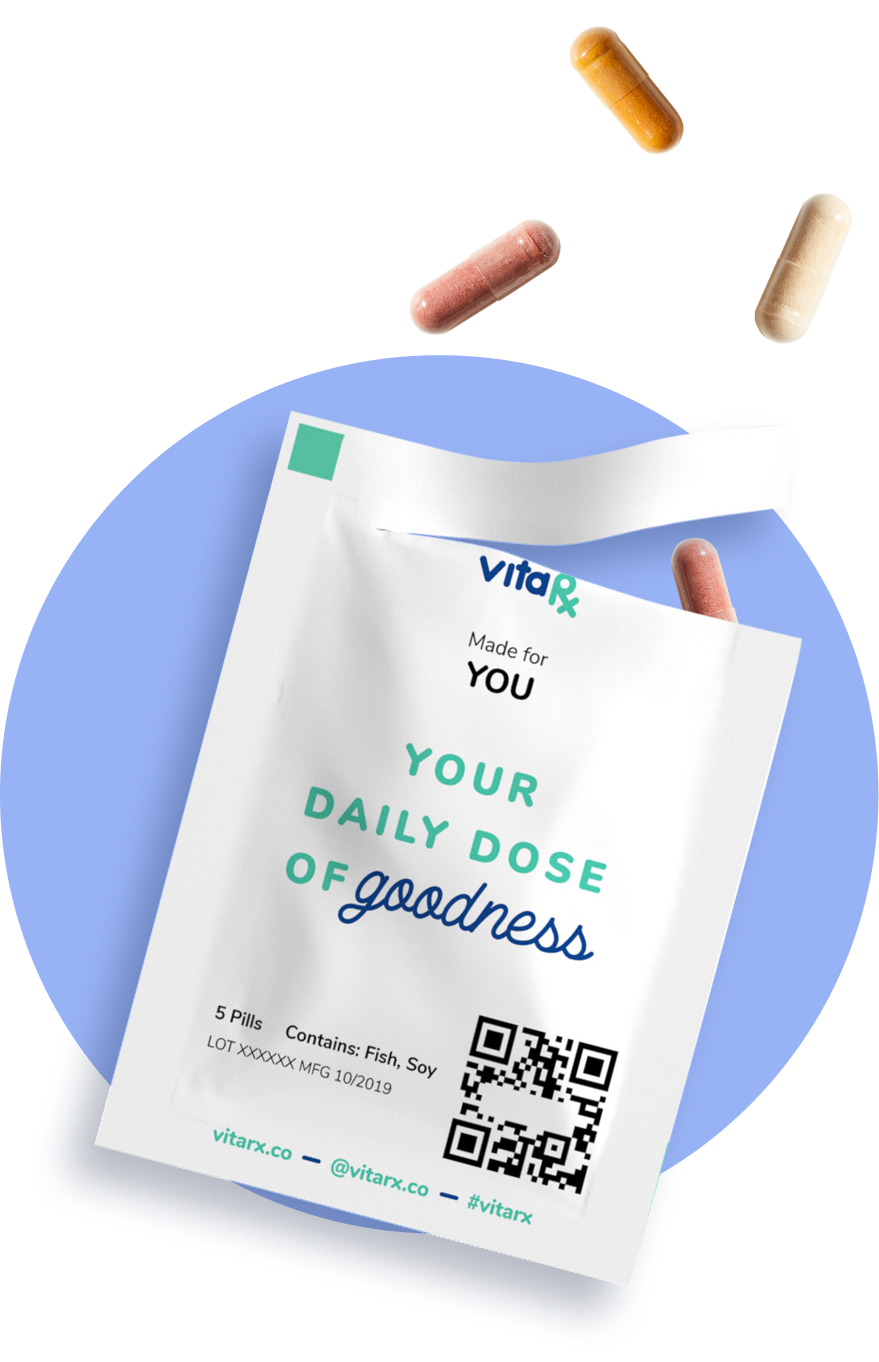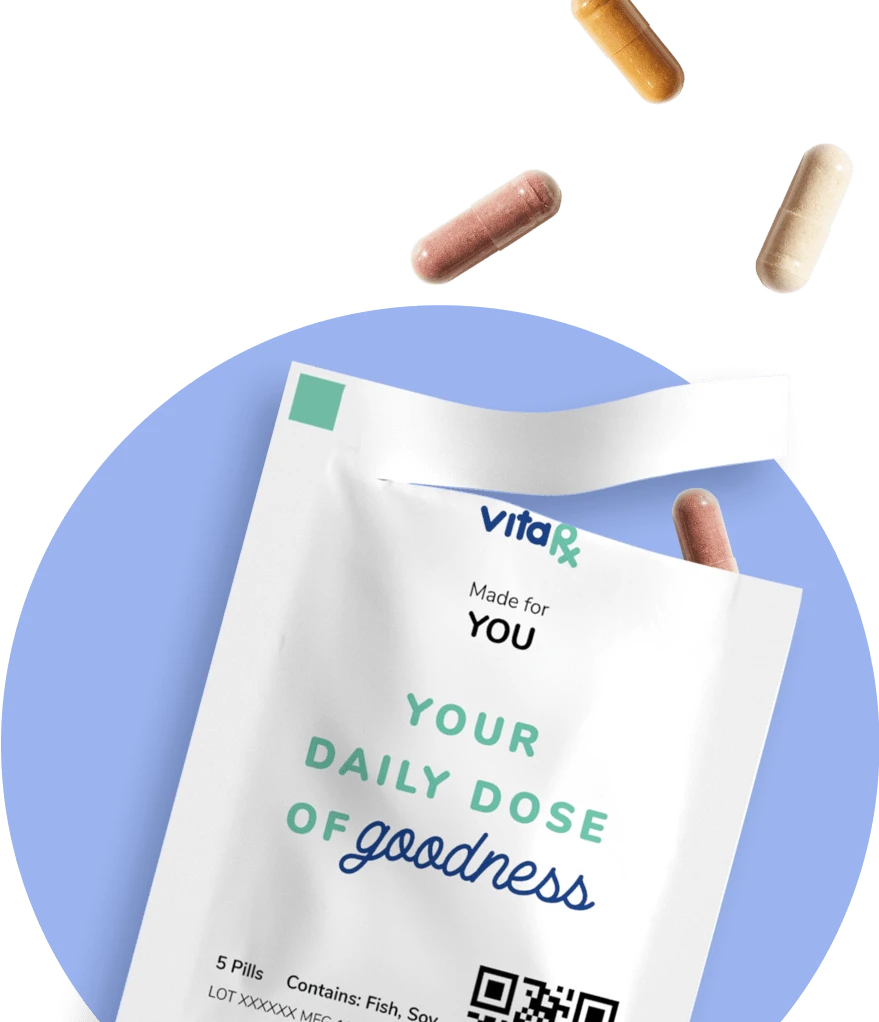Last update: July 23, 2025
7 minute read
Vitamin D Deficiency Symptoms: Identifying the Hidden Signs and Taking Action for Better Health
Feeling sluggish or down during winter? It might be vitamin D deficiency. Know the symptoms, causes, and practical ways to improve your levels naturally.

By Derick Rodriguez, Associate Editor
Edited by Yerain Abreu, M.S.

Did you know that about 41% of adults in the United States were found to have vitamin D deficiency (<20 ng/mL) in a nationwide survey, and many don’t even realize it?
While we often rely on sunlight, the so-called "admirable" sunshine vitamin, to fill our nutritional gaps, factors like geography, skin color, and lifestyle habits often silently sabotage our vitamin D production.
Vitamin D deficiency symptoms are sneaky, slipping under our radar until more alarming health concerns suddenly make an unexpected appearance.
But with such an important role in bone health, muscular strength, and immune defense, understanding your vitamin D status might just be the health upgrade your body is secretly craving. Below, we unpack the hidden signs.
Key takeaways
- Mood regulation: Vitamin D plays a crucial role in mood regulation, immune health, and bone strength
- Deficiency symptoms: Symptoms of deficiency include fatigue, muscle aches, mood changes, hair loss, and frequent illness
- Year-round strategies: Sunlight, diet, and supplements are effective ways to maintain healthy vitamin D levels year-round
Vitamin D deficiency symptoms often don’t jump out right away—sometimes they’re so subtle you miss them. A 2011 analysis of NHANES 2005–2006 data estimated that about 41% of U.S. Adults had vitamin D levels below 20 ng/mL, indicating deficiency.
Over time, if unaddressed, low levels can significantly affect overall health. We recommend watching for patterns in your energy, mood, or immunity, as many people only discover the issue after noticing more serious problems.

What is vitamin D deficiency?
Vitamin D deficiency happens when your body doesn’t have enough vitamin D to maintain healthy functioning. Since vitamin D helps absorb calcium, which is critical for bone health, a lack of vitamin D can weaken bones, muscles, and the immune system.
But wait, doesn’t sunlight give enough vitamin D for most people? Not necessarily—differences in geography, season, skin tone, sunscreen use, and time spent indoors can all limit how much vitamin D your skin makes from sunlight.
Milk made us stronger!
Milk fortification with vitamin D in the 1930s dramatically reduced the incidence of rickets in many developed countries, yet the condition still occurs in some parts of the world and vitamin D deficiency remains common today.
Let’s look at what low levels actually feel like.
Common symptoms of vitamin D deficiency
There are several warning signs, though symptoms in early deficiency can be missed. Here are the most common:
- Fatigue: Persistent tiredness or low energy, even with adequate rest.
- Bone pain and muscle weakness: Aching in the bones or muscles—including the lower back—can signal low vitamin D.
- Frequent illness or infections: Higher susceptibility to colds and respiratory illness.
- Mood changes, including depression: Shifts in mood, including irritability or depressive feelings.
- Slow wound healing: Cuts or scrapes taking longer than normal to heal.
Think of it this way: symptoms are often vague and overlap with other health problems, so it’s important to look at the whole picture, including your risk factors and lab results.
Here’s one commonly cited reference range:
Vitamin D Level | Classification |
|---|---|
Below 12 ng/mL | Deficiency |
12–20 ng/mL | Insufficiency |
≥20 ng/mL | Sufficiency for most healthy individuals |
Some experts and professional societies advocate for a higher threshold of ≥30 ng/mL, especially in high-risk groups, so optimal targets may vary.
Here’s why these numbers matter: Levels below 20 ng/mL are considered risky and may lead to symptoms, while above 30 ng/mL is generally best for bone and immune health.
Symptoms in children
Children with vitamin D deficiency can develop:
- Rickets: A rare but severe condition in children where growing bones can become soft and bend.
- Muscle weakness and bone pain: Poor physical strength or aches.
- Hypocalcemia: Possible Seizures
- Growth retardation and fracture risk
Still scratching your head about rickets? Rickets affects children who are still growing and do not absorb enough calcium from food due to vitamin D deficiency. This causes skeletal deformities like bowed legs due to improper bone hardening during growth.
VitaRx Tip
Breastfed infants may be at a higher risk of vitamin D deficiency because most women are deficient themselves. Sun exposure or supplementation of the mother can prevent the deficiency in the breastfed baby.
Who’s at risk?
Some people are more likely to run low on vitamin D. Knowing your exposure matters so you can personalize your prevention.
- Older adults: People over 65 produce less vitamin D from sunlight.
- Individuals with darker skin: Their skin makes less vitamin D from sunlight.
- People with obesity: Vitamin D is stored in fat tissues, making it less available to the body.
- Breastfed infants, especially those not given supplements.
- People who have limited sunlight exposure.
- People with certain medical conditions: Like those affecting fat absorption.
- People who’ve had weight loss surgery.
Here’s a side-by-side comparison for quick reference:
At-Risk Group | Main Reason |
|---|---|
Older adults | Less skin production, reduced outdoor activity |
Darker skin tones | More melanin reduces vitamin D synthesis |
Obesity | Vitamin D gets trapped in fat tissue |
Breastfed infants | Low vitamin D in breast milk, no sun exposure |
Limited sun exposure | Indoor lifestyles, geographic location, sunscreen use |
Certain medical conditions | Gut, liver, or kidney problems hinder vitamin D absorption/conversion |
Bariatric surgery patients | Reduced gut surface for absorption |
Here’s the recommended intake for different ages and stages:
Age / Life Stage | Recommended Amount |
|---|---|
Infants up to 12 months old | 10 mcg (400 IU) |
People 1 to 70 years old | 15 mcg (600 IU) |
Adults 71 years and older | 20 mcg (800 IU) |
Pregnant and breastfeeding women | 15 mcg (600 IU) |
But wait—what counts as a vitamin D "unit”? Vitamin D is measured in both micrograms (mcg) and International Units (IU); 1 mcg equals 40 IU.
How to detect vitamin D deficiency
Finding a deficiency usually involves these steps:
- Step 1: Review symptoms and risk factors with your healthcare provider.
- Step 2: Order a blood test to measure calcifediol (25-hydroxyvitamin D), often called “25(OH)D,” to check your vitamin D status.
Chronic deficiency can develop over years, so testing is important—especially for those of us who are in higher risk categories.
Long-term effects
Left unaddressed, low vitamin D can lead to:
- Osteomalacia: Soft bones in adults, resulting in bone pain and muscle weakness.
- Osteoporosis: Increased risk of fractures and brittle bones.
- Rickets: Childhood bone deformities that may have lifelong consequences.
— Dr. Dimitar Marinov, MD, RDN, PhDVitamin D is critical for immune function, mood regulation, and bone health. Its deficiency often presents with vague symptoms, making it hard to identify. Proactive measures, including sunlight, diet, and supplementation, are crucial for maintaining optimal levels and preventing long-term health issues.
Prevention and treatment
Vitamin D deficiency is both preventable and treatable. Our best strategies include:
- Getting safe sunlight exposure (aim for 10–30 minutes of sun exposure, preferably early morning or late afternoon, several times weekly, but adjust based on your skin tone and where you live).
- Eating vitamin D-rich foods, such as:
- Fatty fish (salmon, trout)
- Fortified milk or cereals
- Egg yolks
- Certain mushrooms
- Taking supplements if recommended, particularly for those of us at higher risk.

Wondering how much sun is enough? Still puzzled about your risk or how often to supplement? Check with your provider for the most personalized advice.
Sunlight helps you make vitamin D
The “sunshine vitamin” is made in your body via several metabolic steps, but the first one starts with the breakdown of cholesterol in the skin under UVB light.
Frequently asked questions (FAQ)
Here are some of the most frequently asked questions about vitamin D deficiency.
Final thoughts
Vitamin D deficiency is an overlooked but important health issue—subtle enough to be missed yet strong enough to change our body’s overall strength and well-being.
We can keep levels optimal by building awareness, scheduling regular checkups, eating a good diet, and spending mindful time in the sunshine.
So ask yourself: is your body quietly signaling a vitamin D SOS? Don't wait until more serious symptoms appear; get informed and take action about your health today.
Disclaimer: This article does not give professional medical advice. Please consult a healthcare provider before making any changes based on the information shared.
Sources and references
Editor

Derick Rodriguez
Derick Rodriguez focuses on editing health and wellness-related content. With over half a decade of experience in the digital realm, Derick has developed a unique skill set that bridges the gap between complex health concepts and accessible, user-friendly communication. His approach is deeply rooted in leveraging personal experiences and insights to illuminate the nuances of health and wellness topics, making them more approachable and empowering readers with knowledge and confidence.
Editor

Yerain Abreu
Yerain Abreu is a content strategist with over seven years of experience. He earned a Master's degree in digital marketing from Zicklin School of Business. He focuses on medical and health-related content, working with top healthcare professionals to ensure content is engaging and reliable.
At VitaRx, we're not just passionate about our work — we take immense pride in it. Our dedicated team of writers diligently follows strict editorial standards, ensuring that every piece of content we publish is accurate, current, and highly valuable. We don't just strive for quality; we aim for excellence.
Related posts
While you're at it, here are some other relevant articles you might be interested in.

Get your personalized vitamin recommendations in less than
5 minutes.
Get your personalized vitamin recommendations in less than
5 minutes.






